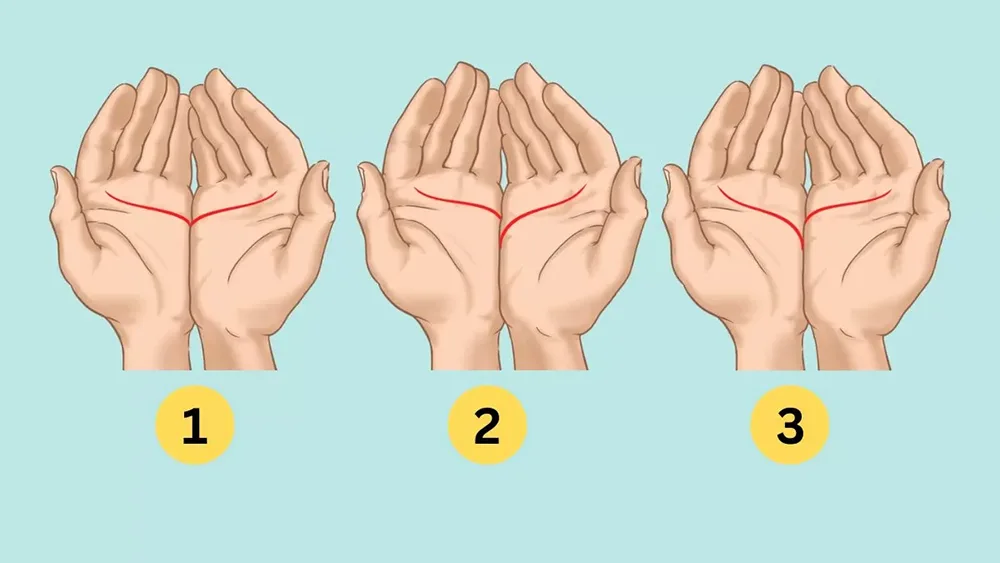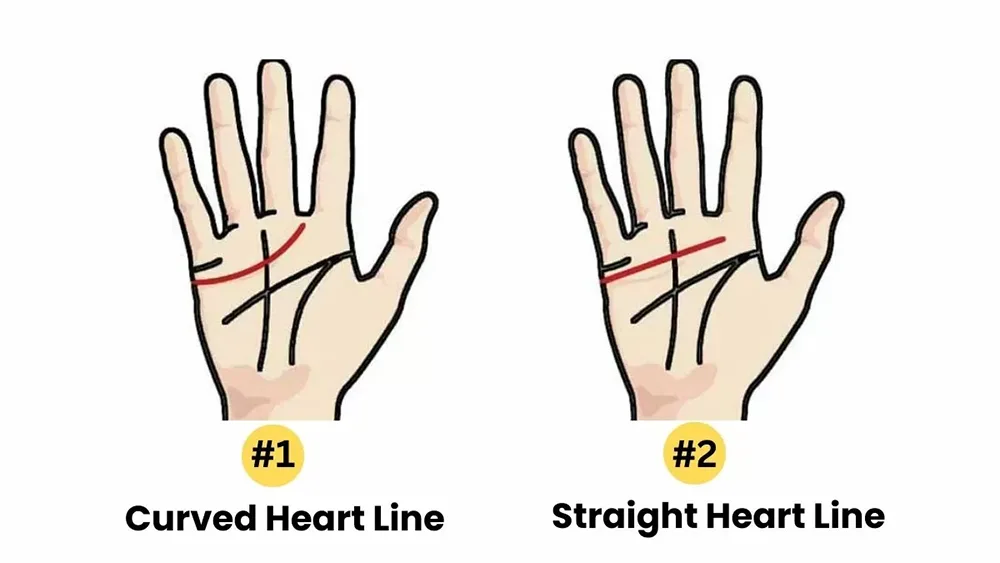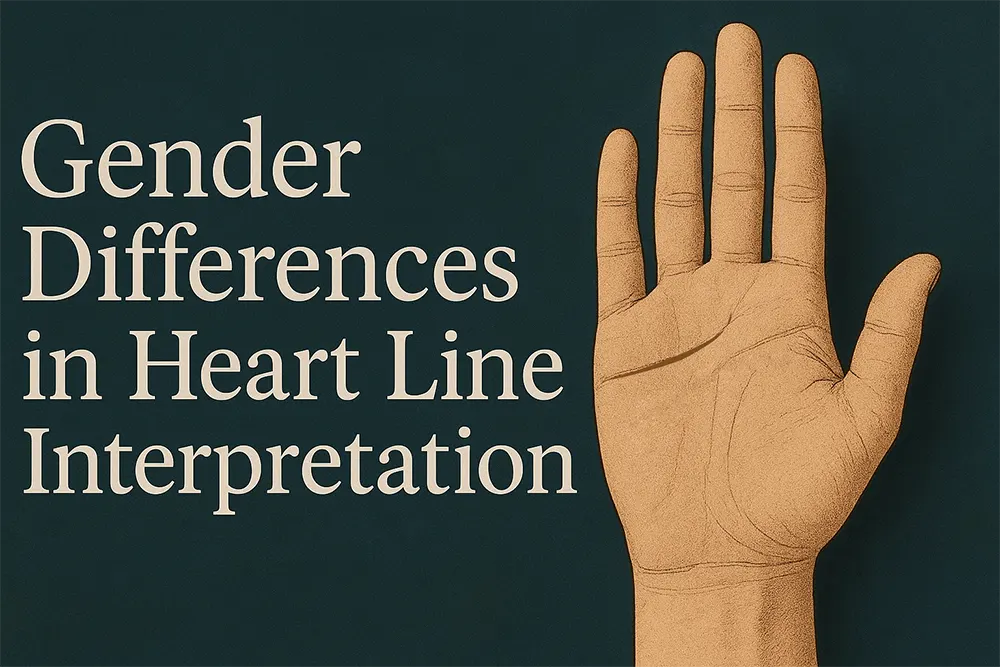Have you ever glanced at the lines etched into your palms and wondered what stories they tell? Palmistry, the ancient art of reading hands, has fascinated humanity for centuries, offering insights into personality, destiny, and relationships. Among the major lines—the life line, head line, and heart line—the heart line stands out as a window into our emotional world. Often called the love line, it reveals how we approach love, handle emotions, and navigate relationships. But here’s where it gets intriguing: interpretations can vary significantly based on gender. In traditional palmistry, the heart line’s meaning shifts depending on whether you’re reading a man’s or woman’s hand, reflecting cultural and historical views on emotional expression.
In this comprehensive guide, we’ll dive deep into the heart line, exploring its basics, common variations, and, most importantly, the gender-specific nuances that make palm reading so personalized. Whether you’re a beginner curious about your own palm or a seasoned enthusiast seeking deeper knowledge, understanding these differences can unlock profound self-awareness. Let’s embark on this journey through the palms, where every curve and break holds a clue to the heart’s secrets.
The Foundations of Palmistry: Understanding the Heart Line
Before we delve into gender differences, it’s essential to grasp the fundamentals of palmistry and the role of the heart line. Palmistry, also known as chiromancy, dates back thousands of years, with roots in ancient India, China, and Egypt. It spread through Europe during the Middle Ages and has evolved into a blend of tradition and modern psychology. Practitioners analyze the shape of the hand, the mounts (fleshy areas), fingers, and lines to interpret character traits and life paths.
The heart line is one of the three primary lines, positioned at the top of the palm, just below the fingers. It typically starts under the little finger (Mercury finger) and extends toward the index finger (Jupiter finger) or middle finger (Saturn finger). This line isn’t about physical heart health—though some traditions link it loosely—but rather emotional health, love attitudes, and relational dynamics.
A clear, deep heart line suggests emotional stability, empathy, and fulfilling relationships. In contrast, a faint or fragmented line might indicate emotional turbulence, guarded feelings, or past heartbreaks. The line’s length, curvature, and markings (like islands, forks, or chains) add layers of meaning. For instance, a long heart line spanning the palm denotes deep passion and loyalty, while a short one hints at emotional reserve or practicality in love.
In palm reading, the hands themselves matter: the dominant hand reflects your current life and choices, while the non-dominant hand shows innate traits and potential. This distinction sets the stage for gender-specific readings, as traditional palmistry assigns different significances to left and right hands based on gender.
Traditional Gender Roles in Palm Reading: Left vs. Right Hand
One of the most fundamental gender differences in palmistry revolves around which hand to prioritize. In many ancient systems, particularly Indian and Chinese palmistry, the rules differ for men and women:
- For Men: The right hand represents acquired traits—skills, experiences, and life changes shaped by actions. The left hand reflects inherent qualities, like natural temperament and destiny from birth.
- For Women: It’s reversed—the left hand shows acquired traits, while the right hand reveals inherent qualities.
This tradition stems from historical views on gender roles. Men were seen as active “doers” in society, so their right (active) hand highlights achievements. Women, often associated with intuition and home life, have their left (receptive) hand as the key to current insights. Modern palmists, however, often read both hands for a holistic view, downplaying strict gender binaries.
When interpreting the heart line, this hand distinction influences how emotional traits are viewed. For example, a curved heart line on a man’s right hand might indicate learned romantic expressiveness, perhaps from life experiences. On a woman’s left hand, the same curve could suggest developed empathy in relationships.

Interpreting the Heart Line in Men: External Expression and Romance
In palmistry, men’s heart lines often emphasize outward emotional expression—how they show love, pursue relationships, and balance heart with ambition. Traditionally, men with a strong heart line are seen as romantic providers, but interpretations can reveal vulnerabilities too.
- Long Heart Line in Men: A line extending across the palm suggests a romantic soul who’s deeply invested in love. Such men are often “henpecked” in folklore—meaning they’re devoted partners who prioritize their spouse’s happiness. However, this length can also indicate emotional upheavals, like intense breakups that lead to personal growth. For instance, if the line ends under the Jupiter mount, it points to idealistic love, where the man seeks a soulmate who inspires him.
- Straight Heart Line: Common in men, this indicates logical, stable emotions. He’s conservative in love, preferring steady relationships over flings. If unbroken, it promises a harmonious family life, but a straight line that’s too rigid might show emotional detachment, focusing more on career than romance.
- Curved Heart Line: Upward curves reveal verbal charm and the ability to create romantic moments. Men with this are flirtatious and passionate, but downward curves suggest negativity or twists in love, perhaps due to past betrayals.
Special cases include the Simian Line, where the heart and head lines merge into one. For men, this is auspicious—it signals stubborn determination leading to career success. Emotionally, it means head and heart work in unison, making him pragmatic in love but potentially inflexible.
Breaks or islands on a man’s heart line often denote external stressors, like work-related emotional strain. A break under the little finger might indicate material worries affecting relationships, while forks at the end suggest balancing logic and emotion effectively.
In examples from Chinese palmistry, a man with a very long, forked heart line might enjoy popularity with the opposite sex but face jealousy or disputes. Remedies for weak lines include wearing yellow sapphire to boost positivity or practicing meditation to align emotions with actions.
Interpreting the Heart Line in Women: Inward Depth and Nurturing
Women’s heart line interpretations traditionally focus on inner emotional depth—intuition, nurturing, and relational harmony. This reflects historical views of women as emotional anchors in families, but modern readings emphasize empowerment and balance.
- Long Heart Line in Women: Similar to men, it indicates faithfulness and deep affection. Women with this are loyal partners, but the line’s length can warn of major life shifts post-breakup or marriage issues. If it ends between Jupiter and Saturn mounts, it shows a balanced, realistic approach to love, blending passion with practicality.
- Curved Heart Line: Often seen in women, an upward curve signifies expressiveness and empathy, making her a natural caregiver. She’s affectionate and seeks deep connections, but a wavy curve might indicate emotional inconsistency, leading to multiple relationships.
- Short Heart Line: Suggests emotional reserve, where logic prevails. Women with this prioritize independence or career, but they’re capable of steady, practical love once committed.
The Simian Line in women is considered challenging—it implies stubbornness that could harm relationships or family. Emotionally, it means overthinking feelings, leading to stress. However, with effort, it can channel into strong willpower.
Breaks hold specific meanings: A broken line under the ring and little fingers might signal a failed first marriage but a happier second one. Islands indicate emotional stress, perhaps from family duties, while chains suggest confusion in love.
In Indian palmistry, “cow tail lines” at the heart line’s start in women (though more discussed for men) can hint at vitality in relationships. Examples include a woman with a chained heart line facing insecurity but finding stability through self-reflection. Remedies like rose quartz crystals or pearl gemstones help heal emotional wounds and foster openness.

Common Variations of the Heart Line and Their Universal Meanings
Beyond gender, the heart line’s variations offer rich insights applicable to all. Here’s a breakdown:
| Variation | Meaning | Emotional Implication |
|---|---|---|
| Forked End | Balance between heart and mind; empathy | Ability to understand others deeply, but potential choices in love |
| Chained | Emotional confusion or inconsistency | Turbulent relationships; need for clarity |
| Islands | Periods of stress or heartbreak | Temporary emotional blocks; resilience needed |
| Breaks | Major setbacks or changes | Healing from past wounds; new beginnings |
| Double Line | Strong emotional control; parallel loves | Depth in feelings; possibly multiple deep bonds |
| Wavy | Instability in emotions | Fluctuating romances; seek stability |
These markings interact with gender interpretations. For men, a forked line might mean logical romance; for women, it could indicate nurturing choices.
Modern Perspectives: Blurring Gender Lines in Palmistry
Today, palmistry evolves beyond rigid gender norms. Experts argue differences stem more from personality than biology—introverts might have straighter lines, extroverts curved ones, regardless of gender. Psychological integrations, like linking the heart line to emotional intelligence (EQ), emphasize self-awareness over stereotypes.
Cultural shifts also play a role: In Western palmistry, gender is less emphasized, focusing on holistic readings. Yet, traditional views persist in Eastern practices, offering a blend for diverse interpretations.
Real-Life Examples and Case Studies
Consider a male executive with a Simian Line: His merged heart-head line drove career success but strained relationships until he learned emotional flexibility. Or a woman with a broken heart line who, after a divorce, found fulfillment in a second marriage, aligning with palmistry predictions.
These stories illustrate how gender differences add nuance, but personal context is key.
Frequently Asked Questions About Heart Line Interpretation
What does a long heart line mean in palmistry?
A long heart line represents deep emotional capacity, passionate romantic preferences, and the potential for long-lasting, meaningful relationships. It suggests loyalty but warns of intense upheavals if broken.
How do breaks in the heart line affect interpretations differently for men and women?
For men, breaks often indicate external stressors like career pressures impacting love. For women, they might signify internal emotional wounds, such as failed marriages, but with potential for happier rematches.
Is the Simian Line always bad for women?
Traditionally yes, implying harm to relationships, but modern views see it as stubborn strength that, when channeled, leads to empowerment.
Which hand should I read for heart line insights?
Use the dominant hand for current emotions and the non-dominant for innate traits, adjusting for traditional gender rules.
Can the heart line change over time?
Yes, through life experiences, emotional growth, or even remedies like gemstones, reflecting evolving karma and thoughts.
What if my heart line is absent or very faint?
It might suggest emotional detachment or a head-over-heart approach, but consult a palmist for context—it’s not necessarily negative.
How does the heart line interact with other lines in gender-specific ways?
In men, a heart line touching the head line emphasizes logical love; in women, it highlights intuitive nurturing.
Conclusion: Embracing the Heart Line’s Wisdom
The heart line in palmistry is more than a crease—it’s a map of our emotional journey, colored by gender nuances that add depth and personalization. Whether you’re exploring traditional differences or modern inclusive views, remember: palms evolve, just like us. Use these insights for self-reflection, not rigid predictions. If your heart line sparks curiosity, consult a professional palmist or experiment with readings on friends. After all, the true power of palmistry lies in understanding ourselves better, one line at a time.

Related Posts
Multiple Marriage Lines in Palmistry – Interpreting Emotional Bonds
Cross-Cultural Interpretations of the Head Line
Faint Mercury Line – Does It Indicate Weak Health?
Double Fate Line – Dual Careers Explained: Unlocking the Secrets of Your Palm in Palmistry
November 2025 Horoscope: Career Boost for Earth Signs – Taurus, Virgo, Capricorn
Case Studies: Famous Leaders Head Lines